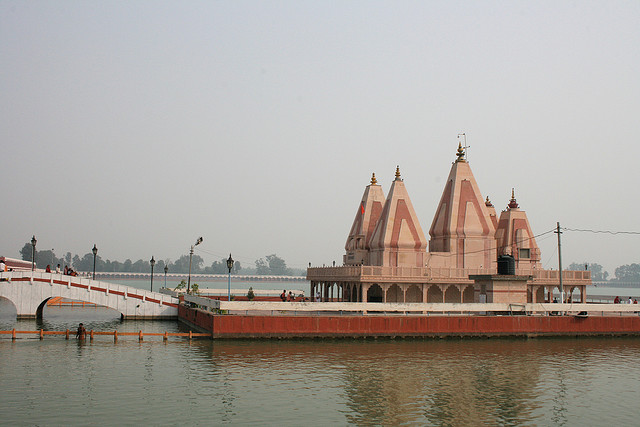Dedicated to Brahma, the god who created our planet. Small temples and ghats surround the lake which is a very holy one. It is said that a dip in its waters during a lunar eclipse purifies the body and soul, and going by the turnout, Hindus do believe in that.
Brahmasarovar is an ancient sarovar with historical and religious importance and it is also one of the largest manmade bathing tanks in Asia. Abul Fazl, who was one of the historians in Akbar’s court, called it a ‘mini sea made by man’.
The size of the large tank is about 3600x1500 feet with separate bathing spaces for men and women along with arched enclosures. As per the religious beliefs of people, a single dip in the sarovar is equal to performing a Asvamedha Yajna which why this place is very popular among devotees especially during the solar eclipse.
Brahma Sarovar is a lovely water body where history, legends and beauty coincide with each other. As per Hindu mythology, it was from here that Lord Brahma created the mother earth. So Brahama Sarovar is often called as the cradle of Indian civilization. This lake found its mention in the 11th century book Kitab-ul-Hind written by Alberuni. Encircled by a number of holy shrines Brahma Sarovar presents an enchanting environ to the pious people. The sarovar is also mentioned in the eleventh century AD memoirs of Al Beruni.
This huge water body of 1800 meter length and 1400 meter width Braham Srovar witnesses amazing number of devotees in the Solar eclipse since it is believed that a holy dip during the eclipse will absolve all the sins. Apart from its devoutness this lake is one of the picturesque spots in the near vicinity. It wears an imposing look during the Gita Jayanti celebrations when earthen lamps would light the entire surface with its glittering beams. During November and December the lake looks astonishingly colourful with the presence of the avian flock that migrates from various parts of the world. Their twittering and chirping adds an invigorating appeal to the purity of the place.

